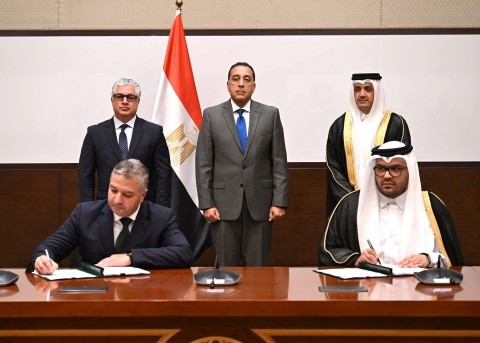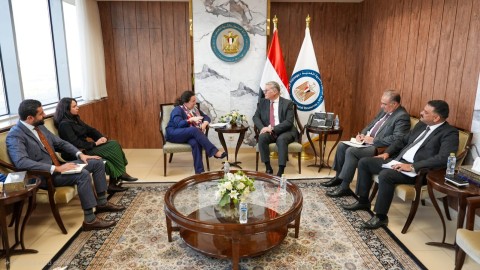Minister of Petroleum and Mineral Resources Karim Badawi and First Undersecretary of the Ministry of Petroleum and Mineral Resources and Supervisor of Energy Efficiency and Climate Alaa El Batal held several meetings with executives from major global companies and international financing institutions.
The discussions,which were held during ADIPEC 2024, focused on enhancing cooperation with the Egyptian petroleum sector in reducing carbon emissions and expanding energy efficiency projects, in line with the ministry’s strategies for sustainable environmental practices in the oil and gas industry, contributing to Egypt’s Vision 2030 for sustainable development and addressing climate change.
Cooperation with SLB for Emission Reduction and Geothermal Energy
El Batal met with a delegation from SLB to discuss joint efforts in attracting investments in exploration and production, as well as reducing emissions, leveraging SLB’s global expertise and advanced technologies.
The meeting highlighted the progress of the pilot project for geothermal energy utilization to generate power, under a memorandum of understanding (MoU) signed earlier this year between South Valley Egyptian Petroleum Holding Company (Ganope) and SLB. Efforts are underway to coordinate with the European Bank for Reconstruction and Development (EBRD) to secure a grant for the feasibility study.
The meeting also emphasized continued cooperation in reducing methane emissions, carbon capture, and storage, as well as localizing hydrogen production. This includes studying the establishment of an electrolyzer facility in Egypt, in cooperation with SLB, John Cockerill, and Technip.
Strengthening Cooperation with Chevron for Methane Emission Reduction
El Batal also met with Chevron executives to review the company’s cooperation in reducing emissions, based on an MoU signed for capacity building and exchanging best practices in carbon reduction projects, including methane emission reduction.
Both sides commended the workshop held at EGAS in September, where Chevron experts shared experiences and discussed opportunities, technologies, and best practices for reducing methane emissions in the petroleum sector. The two sides agreed to continue this cooperation while visiting Chevron’s sites in the US to enhance capacity building and awareness of practical applications of methane emission reduction technologies.
Leveraging Halliburton Technologies for Energy Efficiency and Emission Reduction
In a meeting with Halliburton executives, El Batal underscored the importance of cooperation in providing services and support for oil and gas exploration and production in Egypt, as well as implementing measures to improve energy efficiency and reduce emissions. The discussion also explored opportunities to utilize Halliburton’s expertise and technologies in geothermal energy and hydrogen production.
Seeking Support and Funding for Emission Reduction Projects
El Batal also met with Zubin Bamji, Manager of the World Bank’s Global Flaring & Methane Reduction (GFMR), with whom he affirmed the strategic partnership between the Ministry of Petroleum and the World Bank, especially in providing funding and technical support for key projects such as extending natural gas service to homes, carbon reduction studies in the petroleum sector, and mining sector development.
The meeting also discussed cooperation within the GFMR partnership to support the ministry’s plan to reduce carbon intensity from oil and gas sources, including methane emissions. The World Bank helps appointing an advisor for conducting concept notes for proposed methane emission reduction projects and to help with the initial feasibility studies needed for these projects as a step for offering financial grants for their implementation.
El Batal also met with Pratima Rangarajan, CEO of the Climate Investment Fund, known as OGCI, to review the ministry’s strategy and action plan for emission reduction and energy transition.
The two officials talked about leveraging the organization’s activities to invest in areas of mutual interest, including carbon and methane emission reduction, as well as carbon capture, utilization, and storage.












